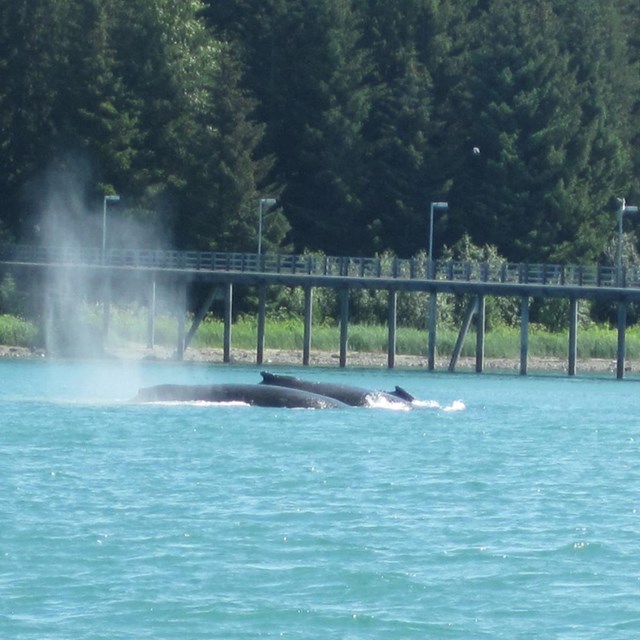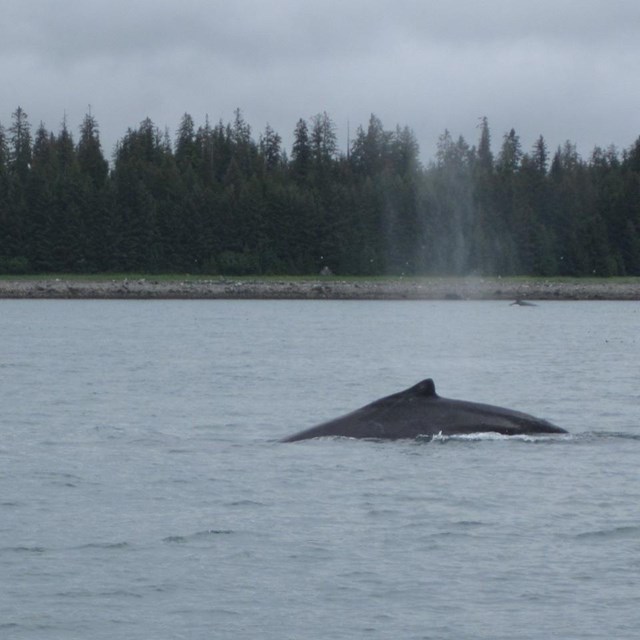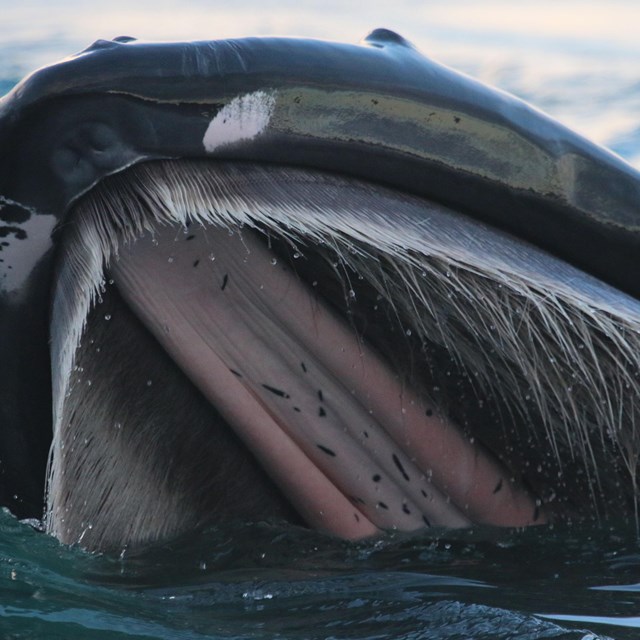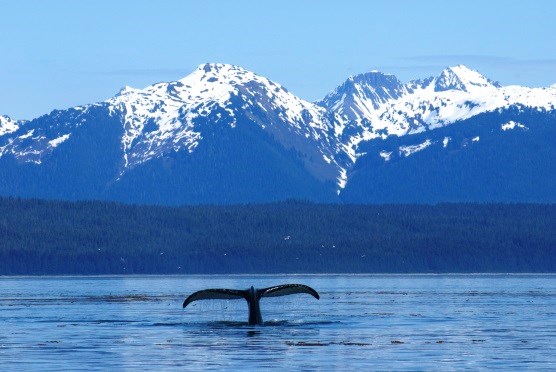
Seeing a Humpback Whale (Megaptera novaeangliae) in Glacier Bay is an experience many visitors never forget. The true giants of Glacier Bay's waters, these endangered animals are 40-50ft (12-16m) long and weigh 40 tons (36,000kg). With a simple breath, the Humpback Whale expels air at over 300mph (480km) creating a cloudy column of vaporized air that can be seen for miles. For their size, Humpback Whales are remarkably acrobatic and stun visitors with their explosive full-body breaching, pectoral fin slapping, tail-lobbing and lunge-feeding maneuvers. Humpback Whales get their name from their typical diving pattern-arching their back before their final or terminal dive. They Come HungryHumpback Whales travel to Glacier Bay for one reason: food. Having fasted the entire winter in places like Hawaii or Mexico, these massive mammals spend their entire summer gorging themselves on the small schooling fish that often concentrate in Glacier Bay's cold, nutrient-rich waters. In a single gulp, a Humpback Whale takes in more water (15,000 gal.) than a typical home uses in five months. A whale uses its tongue (which alone weighs one ton) to press all that water through its built-in, food-filter: its baleen. Feeding like this almost 23 hours a day, a single Humpback can consume almost ½ ton of food each and every day! Sanctuary For WhalesGlacier Bay is a Humpback Whale sanctuary. In the park's waters, Humpback Whales benefit from some of the strongest protections found anywhere on our planet. Once in rapid decline, the number of whales spotted in Glacier Bay is growing every year. What's more, scientists have been studying Humpback Whales in Glacier Bay for decades. Thanks to this research, we continue to learn more about the fascinating life of this magnificent, endangered animal. 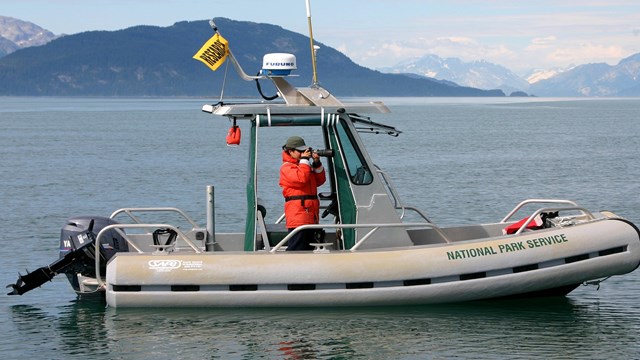
Humpback Whale Monitoring Program
Park biologists monitor whale numbers, identify individuals, document distribution, behavior, feeding, and more 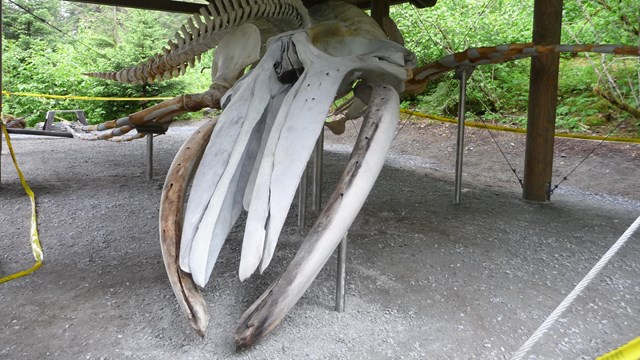
Whale #68 Articulation Project
Learn how we cleaned, re-articulated, and put on display a massive humpback whale skeleton. 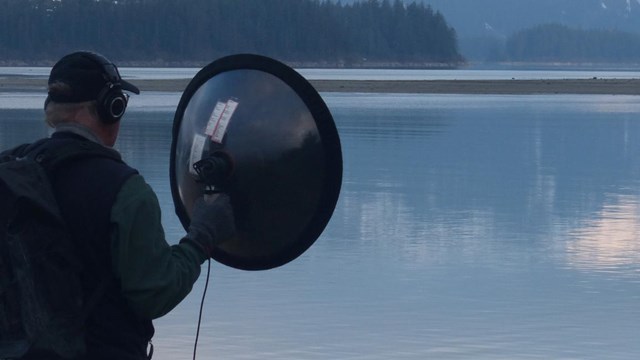
Listen to Whale Sounds
Whale song, feeding calls, contact calls, vocals, flipper slaps, and more 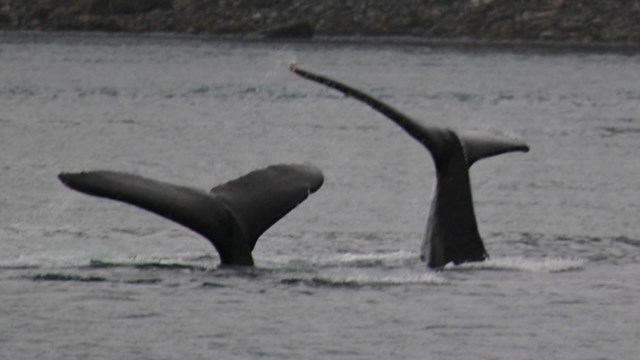
Whale Waters Regulations
Whales most often feed within 1 mile from shore. Learn how to protect them in Glacier Bay Whale Multimedia
The requested video is no longer available.
|
Last updated: October 13, 2023

